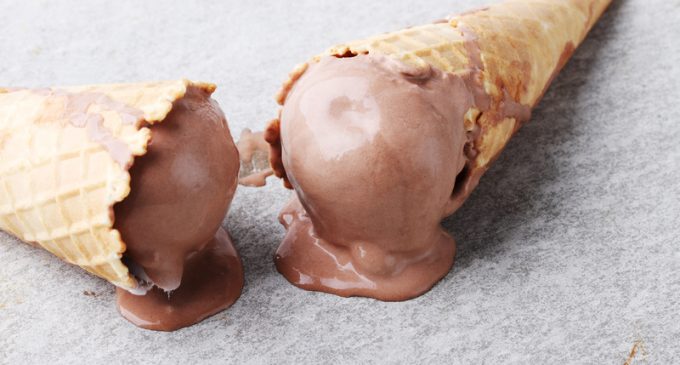
Schaffner's results not only contradict popular thought, but also some other scientific studies, including one from 2014 Aston University’s School of Life and Health Sciences in England. This study concluded that food left on the floor less than 5 seconds were “less likely to contain bacteria than if it is left for longer periods of time.” However, those findings were never published. Schaffner points out that the rules has massive health implications:
Even though the five-second rule is a bit of folklore, it still raised important public health issues that demanded closer scrutiny, he said. He cited research by the Centers for Disease Control, which found that surface cross-contamination was the sixth most common contributing factor out of 32 in outbreaks of food-borne illnesses.
How was the study conducted?
Professor Schaffner and a master’s thesis student, Robyn C. Miranda, tested four surfaces — stainless steel, ceramic tile, wood and carpet — and four different foods: cut watermelon, bread, buttered bread and strawberry gummy candy. They were dropped from a height of five inches onto surfaces treated with a bacterium with characteristics similar to salmonella.
The researchers tested four contact times — less than one second and five, 30 and 300 seconds. A total of 128 possible combinations of surface, food and seconds were replicated 20 times each, yielding 2,560 measurements.
What did the study find?
The research found that the five-second rule has some validity in that longer contact times resulted in transfer of more bacteria. But no fallen food escaped contamination completely. “Bacteria can contaminate instantaneously,” Professor Schaffner said in a news release.
Carpet had a very low rate of transmission of bacteria compared with tile and stainless steel; transfer rates from wood varied.
The composition of the food and the surface on which it falls matter as much if not more than the length of time it remains on the floor, the study found. Watermelon, with its moisture, drew the highest rate of contamination and the gummy candy the least.
In an interview, Professor Schaffner said, “I will tell you on the record that I’ve eaten food off the floor.” He quickly added: “If I were to drop a piece of watermelon on my relatively clean kitchen floor, I’m telling you, man, it’s going in the compost.”
Wow!
We certainly get frustrated when food falls on the floor (especially if it's the last brownie) but we don't think we'll eat anything that's landed on the floor, even if we pick it up quickly.
We Wouldn't Take The Risk!
Article Source: New York Times


Cool